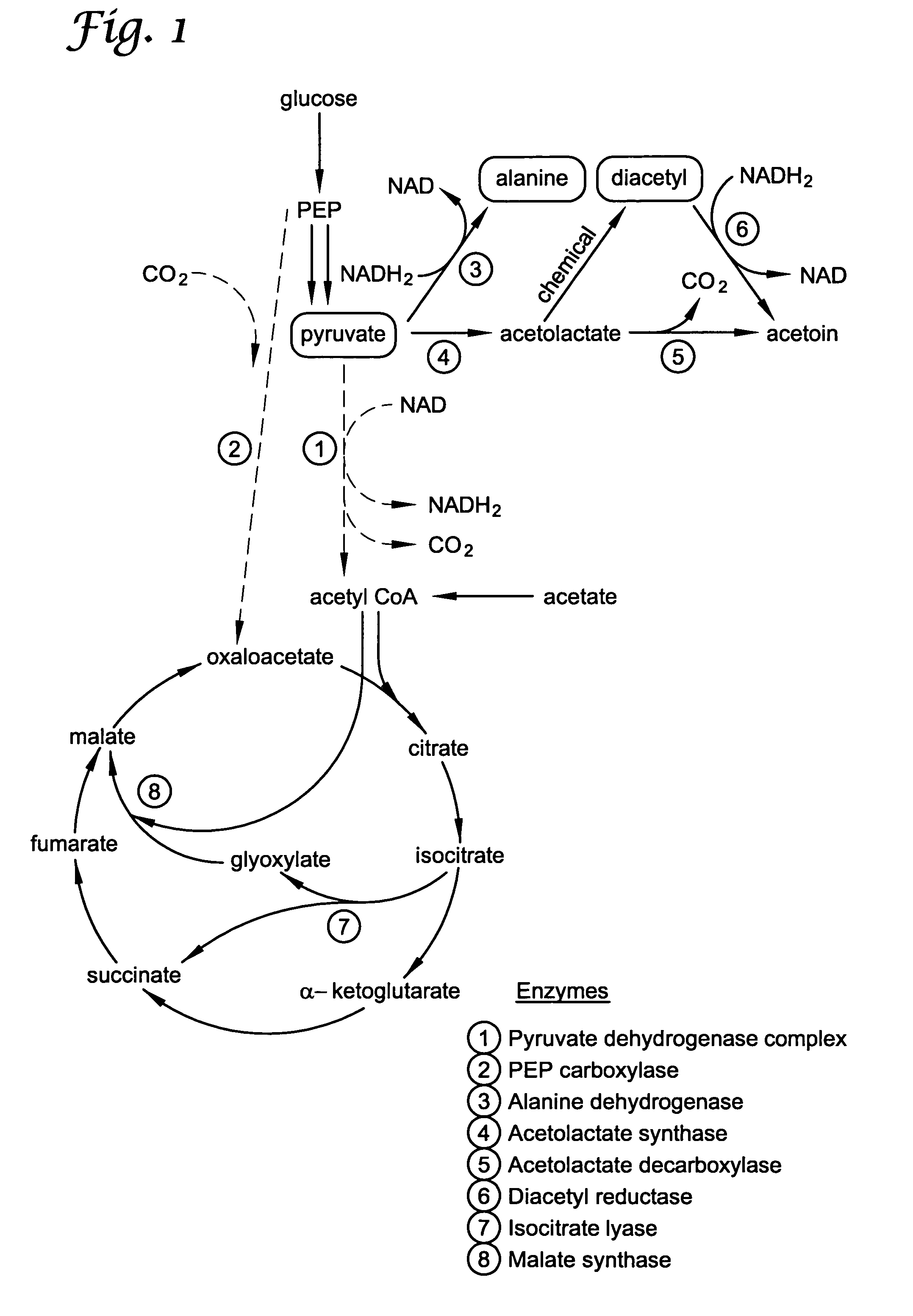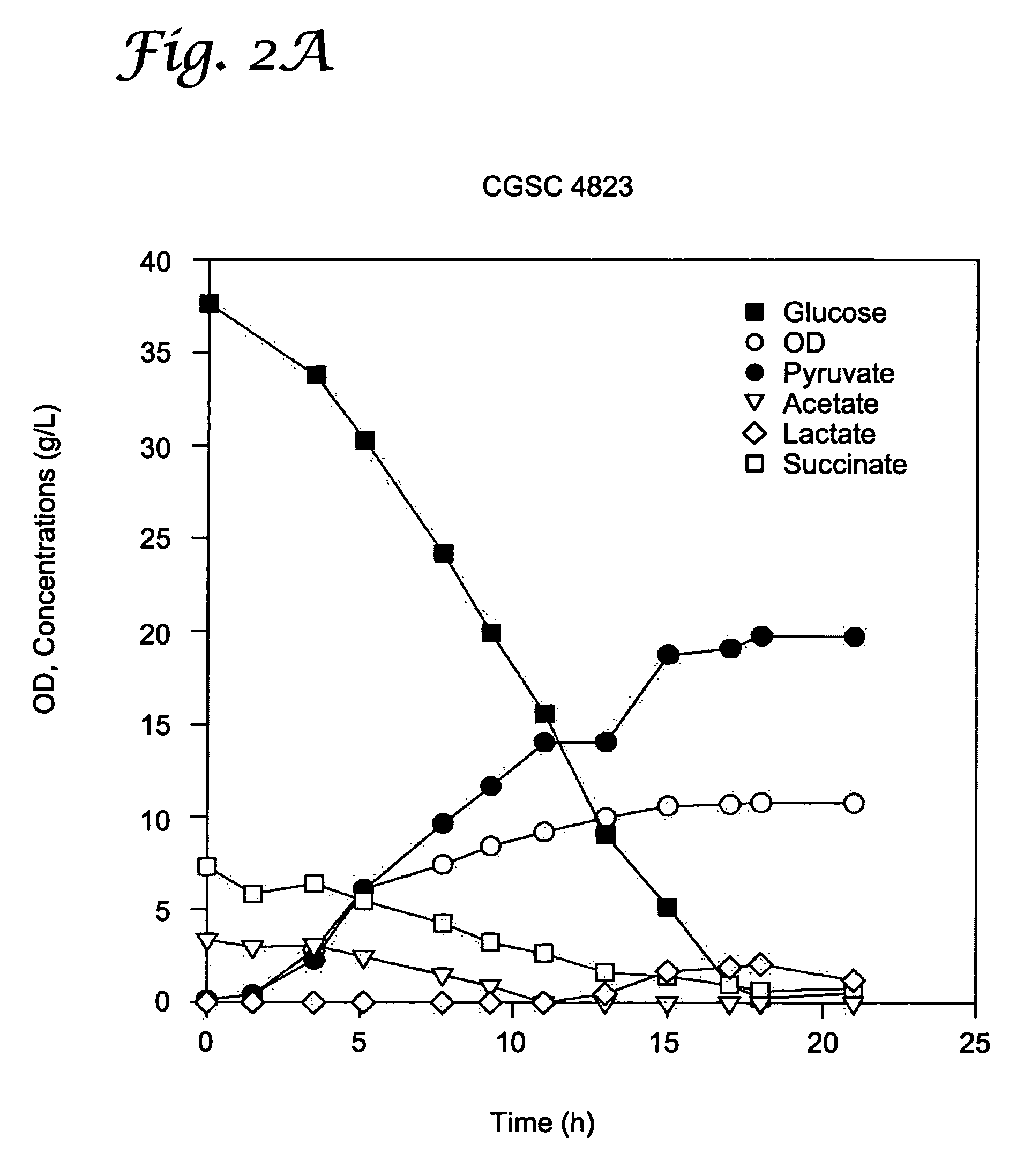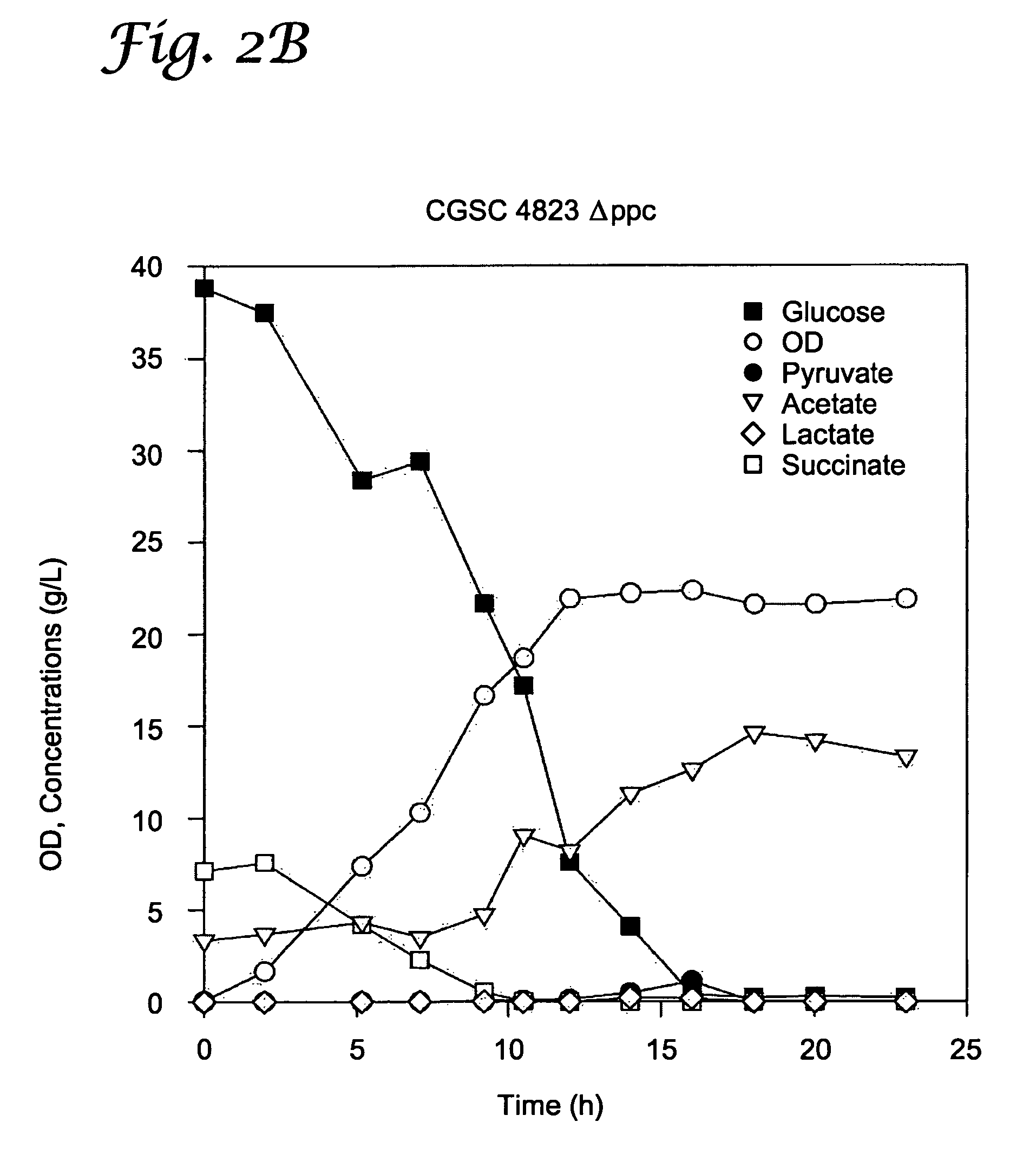Microbial production of pyruvate and pyruvate derivatives
a technology which is applied in the field of microbial production of pyruvate and pyruvate derivatives, can solve the problems of limited efficiency of this method of production and the natural optimal metabolic pathway of the microorganism, and achieve the effect of redox balance, enhanced alanine dehydrogenase activity, and increased alanine dehydrogenase activity
- Summary
- Abstract
- Description
- Claims
- Application Information
AI Technical Summary
Benefits of technology
Problems solved by technology
Method used
Image
Examples
example i
Accumulation of Pyruvate in Defined Minimal Media by E. coli Mutants Lacking PDH Activity
[0045]Strains and plasmids. Strains and plasmids studied are listed in Table 1. The strains fell into two groups. Members of the first group were those that are blocked in their production of acetate. These strains can be classified as rpoS mutants (AJW1483, CGSC5024, CGSC6159), pta mutants (CGSC5992, CGSC7237), and ack mutants (CGSC5993, CGSC7238) (CGSC: E. coli genetic stock culture. Yale University). These strains were examined because it was hypothesized that they might accumulate pyruvate if carbon were prevented from entering the TCA cycle. Members of the second group were those that possess mutations in genes in the PDH complex (CGSC5518—a lpd mutant, CGSC4823—an aceE mutant, and CGSC6162—an aceF mutant).
[0046]
TABLE 1Strains usedReference / NameGenotypeSourceMG1655wild-type (F− λ−)Guyer et al.,1980AJW1483gal hft Δ (rpoS::Kan)Contiero et al.,2000CGSC4823aceE2 tyrT58(AS) trp-26 mel-1CGSCCGSC5...
example ii
Accumulation of Pyruvate in Defined Minimal Media by E. coli Mutants Lacking Both PDH and PEP Carboxylase Activity
[0053]PEP carboxylase is the enzyme that converts PEP to oxaloacetate. This enzyme is believed not to be necessary for growth on acetate, and we reasoned it would serve only to decrease the yield of pyruvate by siphoning off its metabolic precursor PEP.
[0054]PEP carboxylase (ppc) mutants were generated from each of the five strains that accumulated pyruvate or that did not generate acetate: CGSC4823, CGSC5024, CGSC6162, CGSC7237, and CGSC7238. As noted in Example 1, CSGC4823 is an aceE mutant (genotype: aceE2 tyrT58(AS) trp-26 mel-1) and CGSC6162 is an aceF mutant (aceF10 fadR200 tyrT58(AS) adhE80 mel-1). As discussed in Example 1, CGSC6162 accumulates significant pyruvate even without additional genetic modification and under nonoptimized conditions.
[0055]To construct these ppc mutants, a P1 lysate from JCL 1242 (λ-F-Δ(argF-lac)U169 ppc::Kan) was used to transduce each ...
example iii
Accumulation of Pyruvate in Rich Medium by E. coli Mutants Either Lacking PDH Activity or Lacking Both PDH and PEP Carboxylase Activity
[0060]Strains and plasmids. The strains studied were among those listed in Table 1 in Example I. The strains included an rpoS mutant (CGSC5024), pta mutant (CGSC7237), ack mutant (CGSC7238) and a representative mutant for each of the three genes of the PDH complex, aceE, aceF and lpd (CGSC4823, CGSC6162, CGSC5518, respectively). A Δppc mutation was introduced into each of these strains as described in Example II.
[0061]Media and growth conditions. An initial comparison of strains was conducted using 100 mL of media containing (g / L): glucose, 10.0; acetic acid, 3.0; succinic acid, 6.0; yeast extract, 2.5; tryptone, 5.0; KH2PO4, 6.0; (NH4)2HPO4, 8.0; citric acid, 0.3; MgSO4.7H2O, 1.5; CaCl2.2H2O, 0.14; Fe2(SO4)3, 0.0625; H3BO3, 0.0038; MnCl2.4H2O, 0.0188; Na2EDTA.2H2O, 0.012; CuCl2.2H2O, 0.0019; Na2MoO4.2H2O, 0.0031; CoCl2.6H2O, 0.0031; Zn(CH3COO)2.2H2O...
PUM
| Property | Measurement | Unit |
|---|---|---|
| concentration | aaaaa | aaaaa |
| pH | aaaaa | aaaaa |
| concentration | aaaaa | aaaaa |
Abstract
Description
Claims
Application Information
 Login to View More
Login to View More - R&D
- Intellectual Property
- Life Sciences
- Materials
- Tech Scout
- Unparalleled Data Quality
- Higher Quality Content
- 60% Fewer Hallucinations
Browse by: Latest US Patents, China's latest patents, Technical Efficacy Thesaurus, Application Domain, Technology Topic, Popular Technical Reports.
© 2025 PatSnap. All rights reserved.Legal|Privacy policy|Modern Slavery Act Transparency Statement|Sitemap|About US| Contact US: help@patsnap.com



